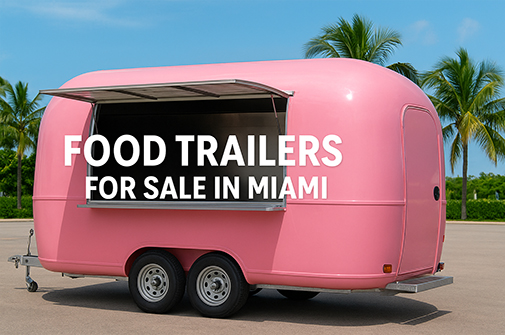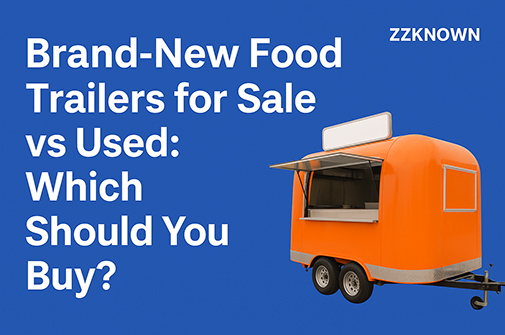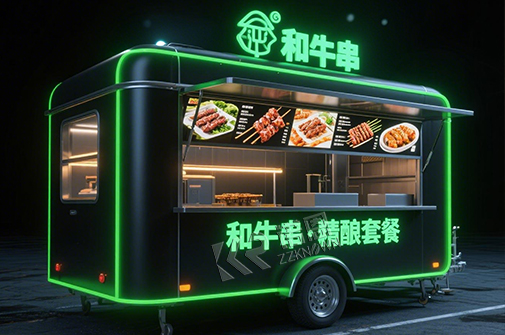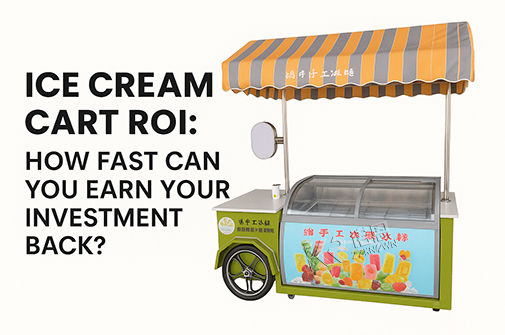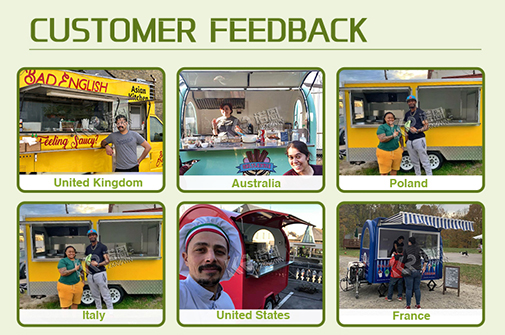How to Set Profitable Prices for Your Food Trailer Menu: A Step-by-Step Guide
Pricing your food trailer menu correctly is critical to balancing profitability, customer satisfaction, and competitiveness. Here’s a data-driven framework to help you determine the right prices while accounting for costs, market trends, and customer psychology.
Start by understanding exactly what it costs to make each item, including:
Ingredient Costs: Price per unit of each component (e.g., 0.50foraburgerpatty,0.50foraburgerpatty,0.10 for a bun).
Labor: Hourly wages for prep and service (e.g., 15/hourx2hours=15/hourx2hours=30 labor cost for 20 burgers).
Overhead: Fuel, permits, trailer maintenance, and utilities.
Waste: Factor in 5–10% for spoiled or unused ingredients.
Example:
Cost to Make 1 Burger:
Patty: $0.80
Bun: $0.20
Toppings: $0.30
Labor: $1.50
Overhead: $0.70
Total Cost: $3.50
Aim for a 25–35% food cost (industry standard for food trucks). Use this formula:
Menu Price=Ingredient CostFood Cost PercentageMenu Price=Food Cost PercentageIngredient CostExample:
If your burger ingredients cost $1.30 and you aim for 30% food cost:
Analyze nearby food trucks and restaurants with similar menus. For example:
| Item | Your Cost | Competitor’s Price | Your Price |
|---|---|---|---|
| Burger | $3.50 | 6.50–7.50 | $6.95 |
| Fries | $0.80 | 3.00–4.00 | $3.50 |
| Specialty Drink | $1.20 | 5.00–6.00 | $5.50 |
Pro Tip: Charge 10–15% less than brick-and-mortar restaurants (your overhead is lower).
Charm Pricing: End prices with .95 or .99 (6.95vs.6.95vs.7.00).
Combo Deals: Bundle high-margin items (e.g., burger + fries + drink = 12vs.12vs.14 à la carte).
Anchoring: Place a premium item first (e.g., a 9gourmetburger)tomakestandard9gourmetburger)tomakestandard6.95 burgers seem affordable.
Justify higher prices by emphasizing:
Premium Ingredients: “Grass-fed beef patties” or “locally sourced organic veggies.”
Convenience: Speed of service at events or unique locations (e.g., beachside).
Signature Flavors: “Award-winning spicy BBQ sauce” or “house-made vegan cheese.”
Case Study:
A taco truck in Austin charges 4.50/taco(vs.competitors’4.50/taco(vs.competitors’3.75) by promoting “24-hour marinated meats” and fresh-pressed tortillas—and still sells out daily.
Track Sales Data: Use your POS system to identify top sellers and underperformers.
Run Limited-Time Offers (LTOs): Test higher prices on new items (e.g., “Truffle Fries: $5.50”) and gauge customer response.
Seasonal Adjustments: Raise prices during peak tourist season or lower them in winter to attract locals.
| Menu Item | Cost | Ideal Price | Notes |
|---|---|---|---|
| High-Margin | $1.50 | $5.50+ | Coffee, fries, soda (low labor) |
| Medium-Margin | $3.00 | 7.50–9.00 | Burgers, tacos, bowls |
| Low-Margin | $4.50 | $10.00+ | Specialty items (lobster rolls) |
Rule of Thumb: 60–70% of your menu should be high-margin items to offset lower-margin crowd-pleasers.
Adjust prices for festivals or private events where customers expect to pay more:
Add 10–20% to standard prices at high-traffic events.
Offer “Event-Exclusive” Items (e.g., loaded nachos for $8.50) to maximize revenue.
Spreadsheet Templates: Google Sheets food cost calculators.
POS Integrations: Square or Toast automatically track costs and suggest prices.
Dynamic Pricing Apps: UberEats' Surge Pricing for peak hours.
Audit ingredient costs monthly (supplier prices fluctuate).
Monitor competitor menus quarterly.
Survey customers: “What’s a fair price for [item]?”
Rotate 2–3 seasonal items annually to test pricing flexibility.
By combining cost transparency, strategic markup, and customer psychology, you’ll build a menu that’s both profitable and popular.
Remember: Small tweaks (e.g., raising a price by $0.50) can significantly boost annual revenue without alienating customers.
